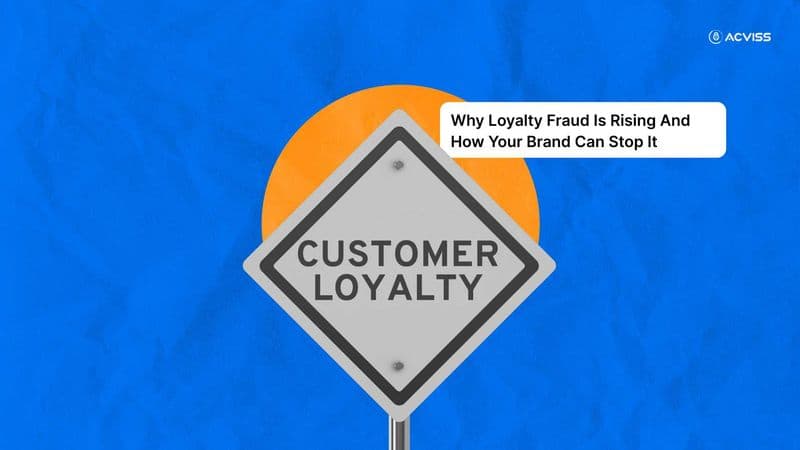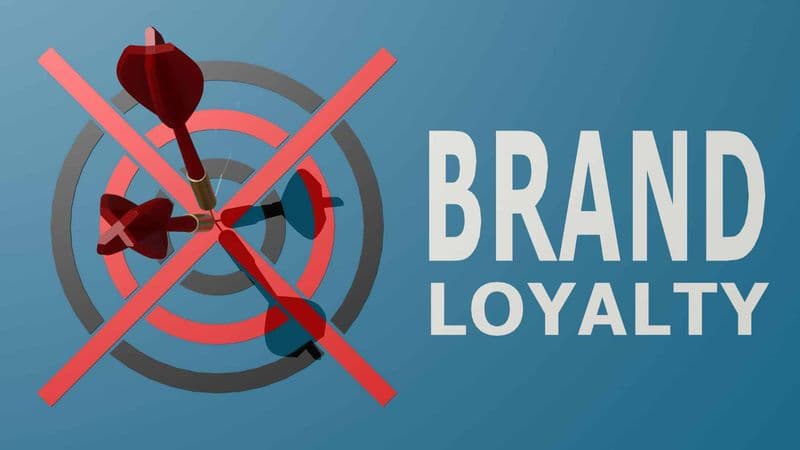Why Loyalty Fraud Is Rising And How Your Brand Can Stop It

Loyalty programmes were once the quiet engines of customer engagement, driving repeat purchases and building emotional affinity. Today, they are strategic assets worth billions. Global loyalty management is projected to reach USD 11.4 billion by 2025. However, that growth has cast an uncomfortable shadow: loyalty fraud, fueled by fake redemptions, dealer manipulation, and increasingly sophisticated exploitation at offline touchpoints.
Many brands assume loyalty abuse is an online-only problem. In reality, offline fraud in retail and distribution, especially where products are moved through complex supply chains, creates the perfect playground for bad actors. Counterfeiters, rogue dealers and internal staff often collaborate to exploit weak verification systems.
This blog explores the anatomy of loyalty fraud, why your programme may already be under attack, and how modern brand protection solutions, including secure product authentication and non-cloneable labelling technologies, can help you regain control.
Loyalty Fraud Is Not a Small Leak. It Is a Systemic Drain.
Every loyalty point issued is a financial liability. When misused, that liability converts into direct loss. The frightening part is that most brands do not detect the abuse until much later because redemption systems, especially in traditional industries like FMCG, manufacturing, automotive spares, agri-inputs and consumer durables, often rely on outdated or loosely monitored processes.
Loyalty fraud carries more than financial damage. It chips away at:
- Customer satisfaction, since genuine customers face rejection of their valid redemptions.
- Brand trust, as counterfeiters infiltrate official programmes.
- Operational efficiency, as teams spend time firefighting false claims.
- Product safety and brand authenticity, when counterfeit goods earn loyalty points and enter the legitimate ecosystem.
These consequences make loyalty fraud a brand protection problem, not just a marketing one.
How Loyalty Programmes Get Abused: The Hidden Mechanics
Most organisations focus on customer fraud but overlook the more dangerous category: dealer and channel fraud. While customers may attempt to extract extra value, dealers exploit structural weaknesses, making fake redemptions appear legitimate.
Below are the most common abuse patterns brands face.
1. Fake Redemptions Using Recycled or Fabricated Codes
This is the oldest trick in the book.
Fraudsters gather used packaging from scrap markets, print duplicate barcodes or QR codes, and submit them repeatedly until a code is marked invalid.
If your system lacks real product verification or brand authentication checks, multiple submissions can slip through.
Why does this happen?
- Use of cloneable or static code
- Weak backend logic that validates redemption order, but not authenticity
- Lack of non-cloneable labelling technology
Result: inflated redemption volumes that have no link to real product purchases.
2. Dealer-Level Abuse and Bulk Claims
Dealers sit in a powerful position. They handle large quantities of goods, have real-time visibility into the movement of genuine and counterfeit products, and often understand system loopholes better than internal staff.
Forms of dealer fraud include:
- Bulk code harvesting from packaging before passing products down the chain.
- Collusion with retailers to claim codes before actual buyers purchase the product.
- Using fake products that copy your packaging to submit loyalty claims.
- Claiming rewards on stock that never left the warehouse.
In industries where margins are thin and competition is intense, dealer abuse can cross 20 per cent of total loyalty costs without being detected.
3. Counterfeit Goods Earning Real Points
Counterfeiters today replicate loyalty stickers and QR codes with alarming accuracy. If your authentication relies on static identifiers or simple packaging prints, counterfeit products can easily be injected into the reward system.
This threatens:
- Product safety,
- Trademark protection,
- IP protection, and
- Overall brand verification.
Every fake product that earns points weakens the brand’s anti-counterfeiting armour.
4. Multiple Redemptions From a Single Genuine Product
This usually stems from either:
- Sequential numbering systems
- Predictable code logic
- Insufficient rate limiting
- Lack of device-level behaviour tracking
Once a fraudster cracks the code pattern, they can generate thousands of valid-looking entries.
5. Agent or Staff-Level Manipulation
Internal fraud happens when field staff or customer-facing teams:
- Pre-register codes before customers
- Approve suspicious redemptions without checks
- Swap customer details to claim rewards
Internal fraud is particularly dangerous because it looks legitimate and often goes unnoticed in dashboards that aren’t designed for fraud prevention.
Why Traditional Loyalty Systems Fail at Fraud Prevention

Most loyalty systems were originally built for engagement, not for protection.
They are designed to reward customers, not defend against malicious actors.
Here are the key gaps.
Weak Authentication Layer
If your product authentication is based on:
- Standard QR codes
- Static barcodes
- Printed alphanumeric codes
- Packaging inputs that can be copied
…then you are inviting counterfeiters inside.
This is where modern anti-counterfeiting technologies, such as non-cloneable labels, become critical.
Lack of Offline Protection
Not every redemption happens online. In India, Southeast Asia, Africa and Latin America, a significant portion of loyalty behaviour occurs in areas with limited connectivity. Fraud thrives in these environments because validation becomes delayed or manual.
Without robust offline protection, including offline verification logs and tamper-proof identifiers, fraud grows in the shadows.
No Real-Time Dealer Behaviour Analytics
Brands that monitor consumer redemptions but ignore dealer-level data have blind spots. Dealer fraud requires:
- Behaviour analysis
- Territory-level patterns
- Anomaly detection powered by AI
- Rate deviation tracking
- Cluster-level fraud scoring
Without these, bulk misuse goes unnoticed.
Fragmented Brand Protection Strategy
If your loyalty system functions separately from your packaging security, traceability, or product verification framework, fraudsters exploit the gaps.
The strongest brand protection solutions integrate:
- Product authentication
- Serialisation
- Supply chain tracking
- Loyalty verification
- Anti-counterfeiting solutions
- Real-time dashboards
Integration turns data into intelligence.
How to Fix Loyalty Fraud: What Modern Brands Must Do
Stopping loyalty abuse requires structural changes, not just cosmetic tweaks. The solutions below represent what the most resilient brands across FMCG, agrochemicals, beauty, electronics and lubricants have adopted.
1. Secure the First Mile With Non-Cloneable Labelling Technology
The most effective fraud prevention begins by ensuring that every product leaving your factory is marked with a label or code that cannot be reproduced, reverse-engineered, or duplicated.
Technologies such as non-cloneable labels, which embed physical randomness at micro-levels, make each product inherently unique.
This guarantees:
- Strong product authentication
- Ironclad brand verification
- Protection against counterfeit packaging
- Prevention of bulk code copying
This is the foundation of modern brand protection.
Acviss offers one such patented non-cloneable technology that binds the physical product with a digital identity, ensuring authenticity before loyalty verification happens.
2. Link Loyalty Redemptions to Verified Products Only
The loyalty layer must sit on top of product authentication.
A redemption should be triggered only after the product is confirmed as genuine.
This prevents both:
- Counterfeit redemptions
- Dealer-level pre-claims
It also builds customer trust because every scan becomes a verification moment that reinforces product safety and transparency.
3. Introduce Intelligent Behaviour Monitoring for Dealers

Dealer fraud requires data-driven controls, such as:
- Daily redemption caps
- Region-level anomaly alerts
- Reward limits tied to verified sales
- Behaviour segmentation
- Velocity tracking
- Linking dealer claims with distributor stock flow
This reduces bulk claims that do not match actual sales.
Acviss Bonus helps organisations run loyalty programmes with built-in fraud detection, dealer monitoring and product-level authentication that directly prevent misuse before rewards are approved.
4. Build an Integrated Brand Protection Ecosystem
Your loyalty system should not operate in isolation. Combine:
- Trademark protection and IP protection frameworks
- Product verification systems
- Anti-counterfeiting technologies
- Supply chain visibility tools
- Customer engagement modules
This ecosystemic approach dramatically reduces vulnerabilities.
5. Protect Offline Environments With Stronger Verification
Offline-first markets must rely on:
- QR-based offline verification
- Encryption-based validation
- Device fingerprinting
- Local caching with sync-on-connectivity
- Tamper-resistant packaging identifiers
Offline protection is crucial because most dealer fraud originates in low-network zones where traditional systems cannot track activity.
6. Reinforce Customer Education and Communication
Fraud prevention is not purely technological. Your customers also need guidance.
Educate them to:
- Verify products before claiming rewards
- Report suspicious packaging
- Use the official app or website
- Avoid sharing codes with third parties
A customer who understands brand authentication becomes your first line of defence.
The Bigger Picture: Loyalty Fraud Is a Brand Protection Problem
The most successful companies treat loyalty and integrity as part of their broader brand protection strategy. Loyalty fraud is rarely an isolated issue. It is often a symptom of deeper vulnerabilities such as weak authentication, porous distribution networks, and outdated anti-counterfeiting systems.
When fraud prevention becomes an end-to-end strategy, brands achieve:
- Higher customer satisfaction
- Safer products in the market
- Legitimate dealer participation
- Reduced counterfeit infiltration
- Stronger brand authentication
- Greater customer loyalty rooted in trust
Solutions like non-cloneable labelling, real-time product verification and intelligent loyalty engines such as Acviss Bonus ensure that rewards flow only to genuine buyers and trusted channel partners.
Conclusion
Loyalty abuse is no longer a small operational inconvenience. It is a signal that your brand is exposed to larger threats in product security, supply chain integrity and dealer management. When fraudsters exploit your loyalty programme, they aren’t just stealing points. They are eroding your brand’s credibility and customer trust.
By integrating robust brand protection solutions, including secure product authentication, non-cloneable labelling technology, offline protection mechanisms and intelligent dealer behaviour analytics, brands can reclaim control and ensure loyalty programmes deliver value to the right people.
Interested to learn more? Get in touch with us to explore solutions tailored to your brand.
